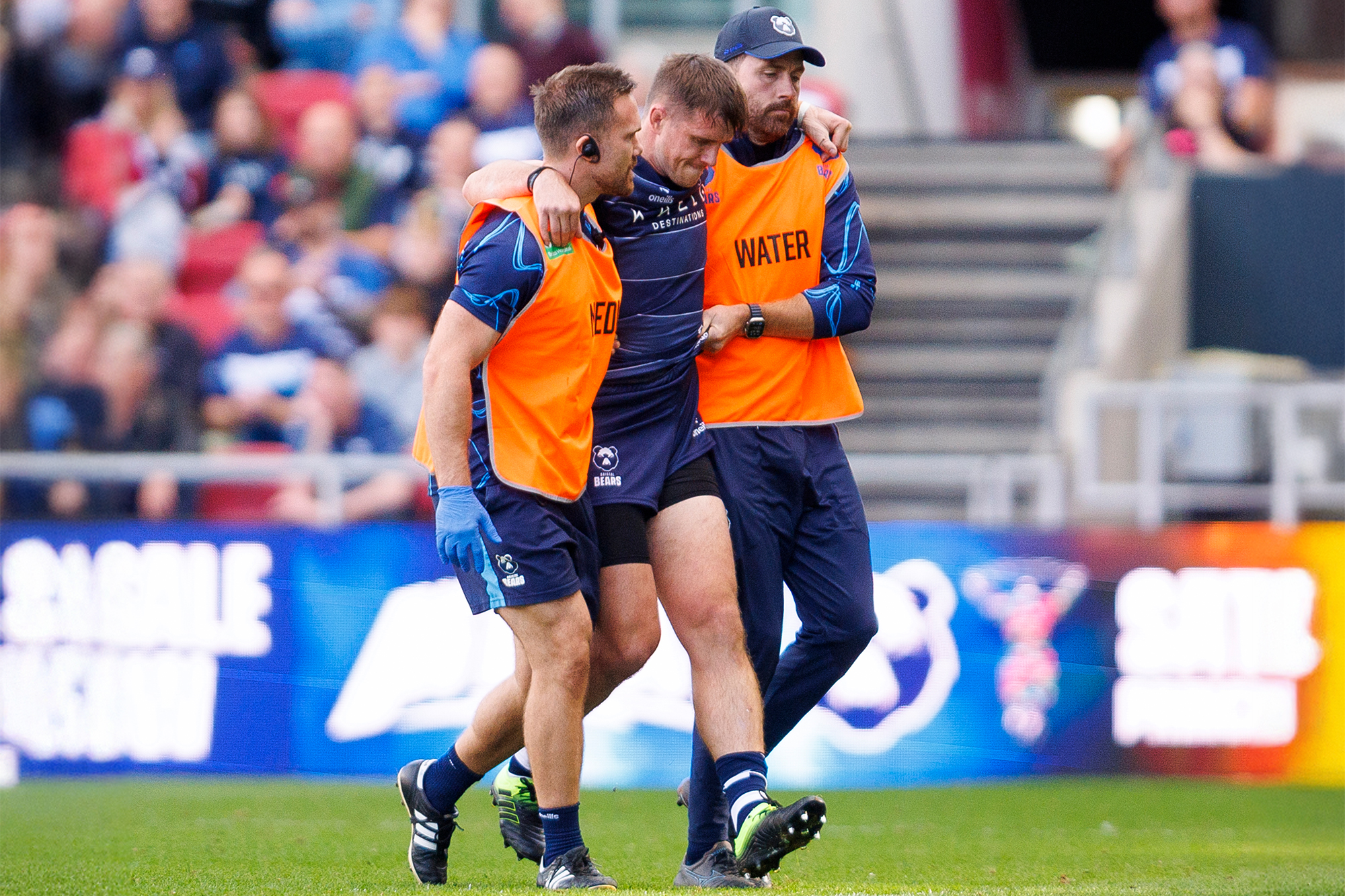Four weeks into the new Prem Rugby season and the medical bulletins are already extensive, with some clubs stretched in key positions. Two of the more unfortunate sides meet on Friday night when Gloucester, missing about 16 players, host Bristol, whose injury list probably ranks under “worst-case scenario”.
Bristol’s starting scrum-half and fly-half, Harry Randall and AJ MacGinty, picked up serious injuries in the opening game, with Randall ruled out until the new year after damaging his hamstring and MacGinty’s achilles injury sidelining him for the season. Including a suspension for star signing Tom Jordan, Bristol went into Friday’s game with 13 backs unavailable.
This led to coach Pat Lam calling a former Bristol player, the USA international Toby Fricker, to see if he was available. And Fricker was, just not at precisely that moment; he was on a stag do. “He was a little bit dusty, but he’s passed his medical and he’s out training” – already one of the quotes of the season.
At some point in the season Gloucester and Bristol’s bill of health will look a lot cheerier, and it will be the turn of the other clubs to count up who is available to train.
“We’ve definitely been here before and if one thing is for certain, we will be here again,” said Rhys Hughes, the head of medical at Gloucester. The usual availability rate sits somewhere between 75% and 85% each week. Which means that a significant chunk of salary cap spending could be going on personnel who are unable to train or play. And what might be viewed externally as a crisis, internally it is “very thorough, planned and well thought out”, as Hughes puts it.
“I’ve had weeks where you might have only 10% of your squad out injured but if I’m honest, those are very few and far between,” says Hughes. Even with the advances of technology and AI, there is still an old-school whiteboard in the medical team’s office charting the fit forwards and backs, as well as the club’s players out on loan and their senior academy group, along with each injured player’s path to returning to play.
If Gloucester play a match on a Saturday, Hughes and his staff – physios, sport therapists, soft-tissue therapists, doctors and a group of external consultants – will host a Sunday injury clinic between seven and nine in the morning, where each of the injured players comes in and is given allocated time slots with their own physio.
Following that, Hughes writes a full injury report for the entire squad: 41 first-team players plus 12 prospects in the club’s senior academy. That report is then sent out to coaches, directors and key personnel, along with Gloucester’s academy sides and on-loan players, to ensure there are enough players available for training on a Monday.
Any imaging or further testing that needs to be done on the Monday takes place at the nearby Nuffield Health Hospital in Cheltenham, one of the club’s partners. If a player needs to be referred to a consultant then both player and medic are left “in the consultancy gods’ hands”, as Hughes puts it, setting off around the country to see if surgery is required.
“It’s very, very uncommon for us to not be able to update the coaches with an answer on what we’re doing with a player, and importantly how long they’re out for and their prognosis, by the end of play on Monday,” says Hughes. “It is a lot of work in the background. There is a huge team of dedicated people that I’m fortunate enough to lead that contribute to that. It’s a well-oiled machine, and it needs to be.”
In a heavy run of injuries, some can be attributed to bad luck, but the medical team at Gloucester are constantly in a review process, with weekly and quarterly meetings to monitor for any trends – “How do we adapt our gym work? What do we need to do with pre-season? How are we training? How does it compare with our GPS metrics?” – searching for “little clues”.
Some clubs are now making a concerted effort to release injury updates on their websites each week, which Hughes sees as a useful way to increase fan engagement. A recent Gloucester post revealed that hooker Jack Singleton was out for an extended period of time following a cardiac event in September.
There is also an underappreciated human element. Watching a player you work with so closely go down on the pitch in a game with a serious injury can be incredibly difficult.
“The hardest thing is to try and put your emotions aside,” says Hughes. “You have to remain calm. The player [will] look at you and hang off every piece of information you tell them, because they really care and understand what we do. They want to know what’s wrong with them really quickly, and we have to make sure we are managing them in the best possible way emotionally and physically. There is a huge psychological burden to injury. Returning from big injuries, when they might involve heavy contacts, there is a huge barrier to overcome.”
At the same time, the feeling of seeing a player back on the field after a long lay-off sounds extraordinary. “It is the best feeling in the world,” says Hughes. “It is what we are in the job for. Obviously, there is the winning side of it, trying to win games and titles, but [seeing a player come back] is one of the best bits of the job.”
Photograph by Bob Bradford/Getty Images
